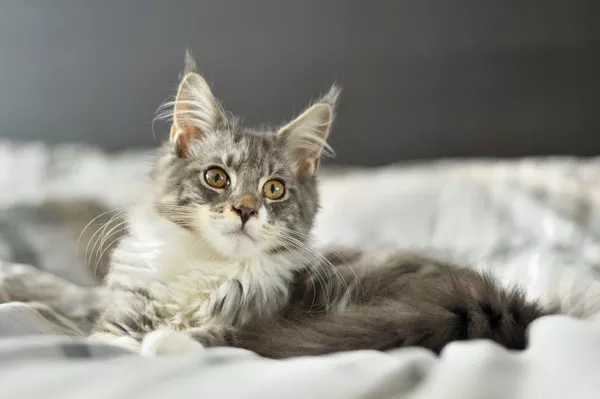Cat collar training is a valuable aspect of responsible pet ownership that offers numerous benefits for both cats and their owners. While some may view collars as solely an accessory, they serve essential purposes beyond aesthetics. In this comprehensive guide, we will explore the reasons why cat collar training is important and provide a step-by-step approach on how to introduce and train your feline friend to wear a collar.
The Importance of Cat Collar Training
Identification and Safety:
One of the primary reasons to collar train your cat is to provide a means of identification. Collars often include tags with important information such as the cat’s name, owner’s contact details, and, in some cases, medical information. This becomes crucial if your cat ever goes missing, ensuring a swift reunion if someone finds and identifies your furry companion.
Moreover, a collar with a bell can alert birds and other wildlife to your cat’s presence, potentially reducing the chances of your cat catching unsuspecting prey. This is not only beneficial for local wildlife conservation but also helps prevent your cat from ingesting harmful substances or contracting diseases from its prey.
Legal Requirements:
In some regions, it is a legal requirement for cats to wear identification, especially if they are allowed outdoors. This is often part of local bylaws aimed at promoting responsible pet ownership and aiding in the resolution of issues related to stray or lost animals. Understanding and complying with these regulations can spare pet owners from potential fines and contribute to the overall safety and well-being of cats in the community.
Medical Alerts:
Collars can also be a platform for medical alerts. Cats with specific health conditions, such as allergies or chronic illnesses, can benefit from wearing collars that include information about their medical needs. This ensures that anyone who comes into contact with the cat, whether a neighbor or a veterinarian, is aware of these conditions and can provide appropriate care.
Choosing the Right Collar
Before embarking on the training process, it is essential to select a suitable collar for your cat. Consider the following factors when choosing a collar:
Material: Opt for collars made from comfortable and durable materials, such as nylon or leather. Ensure that the material is hypoallergenic to prevent any adverse reactions.
Size: The collar should fit snugly but not too tight. You should be able to slip two fingers comfortably between the collar and your cat’s neck. A collar that is too tight can be uncomfortable, while one that is too loose may pose a safety risk.
Safety Features: Choose collars with safety features, such as breakaway or stretch designs. Breakaway collars release if they become caught on an object, preventing injury to your cat. Stretch collars expand slightly to allow your cat to slip out if necessary.
Identification Tags: Invest in durable identification tags that are securely attached to the collar. Include your cat’s name, your contact information, and any relevant medical details.
The Training Process
Start Early:
Ideally, collar training should begin when your cat is still a kitten. Younger cats tend to adapt more easily to new experiences. However, older cats can also be trained with patience and positive reinforcement.
Gradual Introduction:
Before putting the collar on your cat, allow them to familiarize themselves with it. Place the collar near their favorite resting spots or let them play with it. This helps create a positive association with the collar.
Positive Reinforcement:
During the training process, use positive reinforcement techniques. Reward your cat with treats, affection, or playtime when they tolerate the collar. This encourages them to view the collar as a positive experience.
Short Initial Sessions:
Start with short sessions of collar wearing, gradually increasing the duration as your cat becomes more comfortable. Monitor their behavior and remove the collar if they show signs of distress.
Distract with Play:
Engage your cat in playtime while they wear the collar to divert their attention. This helps normalize the collar-wearing experience and associates it with enjoyable activities.
Check for Comfort:
Regularly check the collar to ensure it is not too tight or causing any irritation. If you notice any signs of discomfort, adjust the collar accordingly.
Common Challenges and Solutions
Collar Aversion:
Some cats may initially resist wearing a collar. In such cases, patience is key. Gradually increase the time your cat spends wearing the collar, using positive reinforcement to create a positive association.
Overcoming Fear:
If your cat exhibits fear or anxiety during collar training, consider using pheromone sprays or diffusers to create a calming environment. Additionally, consult with your veterinarian for advice on reducing stress during the training process.
Addressing Scratching Behavior:
Cats may attempt to remove the collar by scratching. To address this, choose a collar with a breakaway design, ensuring that it releases if your cat gets caught on an object. Alternatively, consider softening the collar edges or using collar covers designed for comfort.
Conclusion
Cat collar training is a valuable investment in your cat’s safety and well-being. Beyond fulfilling legal requirements, collars provide a means of identification, enhance safety during outdoor activities, and can even convey vital medical information. By approaching the training process with patience, positive reinforcement, and consideration for your cat’s comfort, you can successfully introduce and acclimate your feline companion to wearing a collar. As responsible pet owners, incorporating this practice into our routine contributes to the overall welfare of our cats and promotes a harmonious coexistence between pets and their human companions.

























